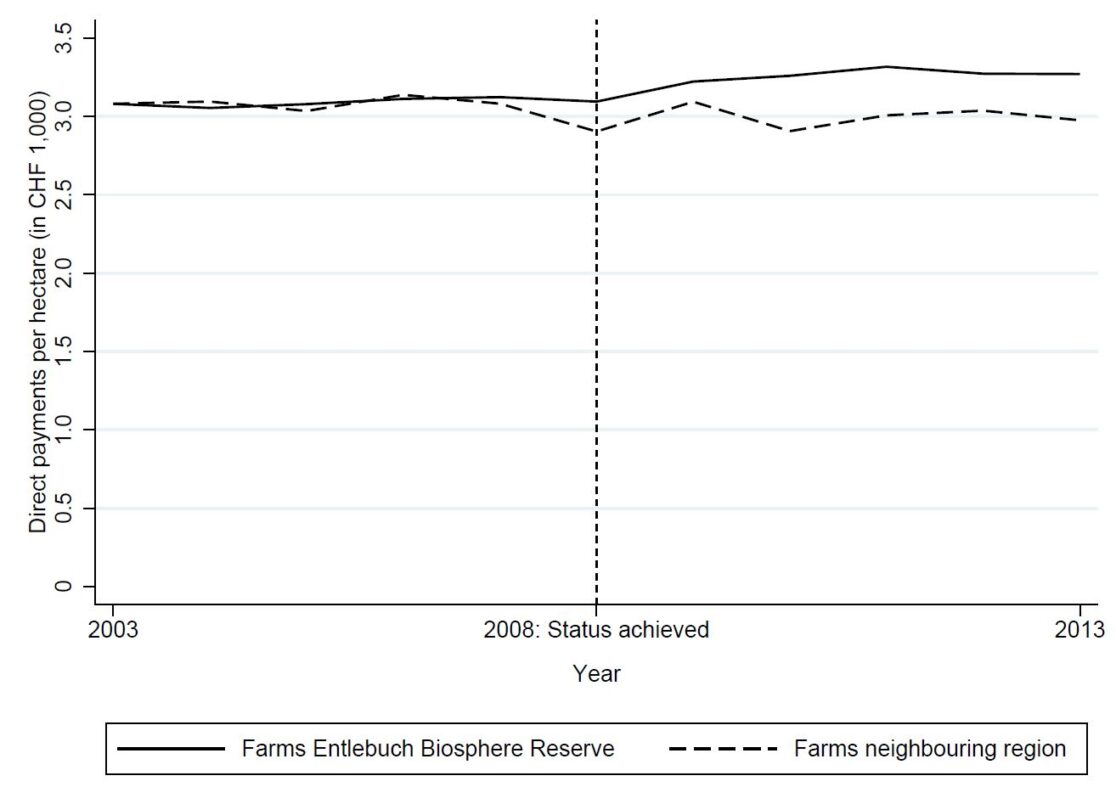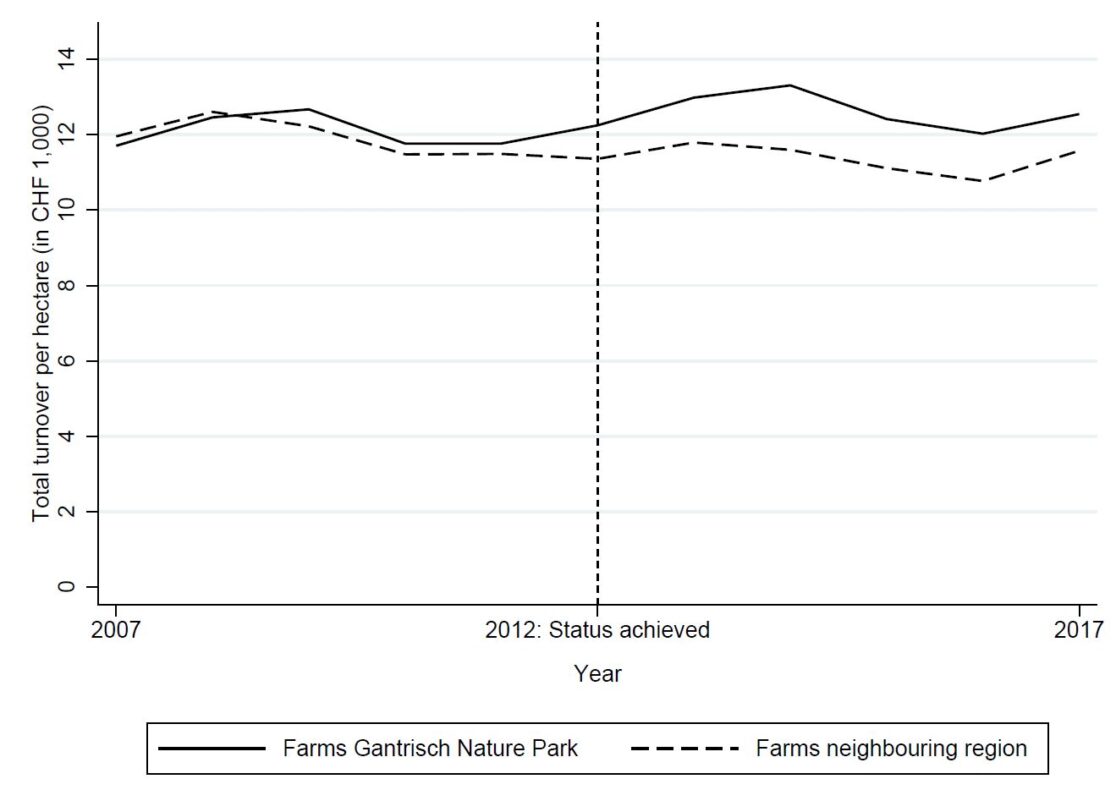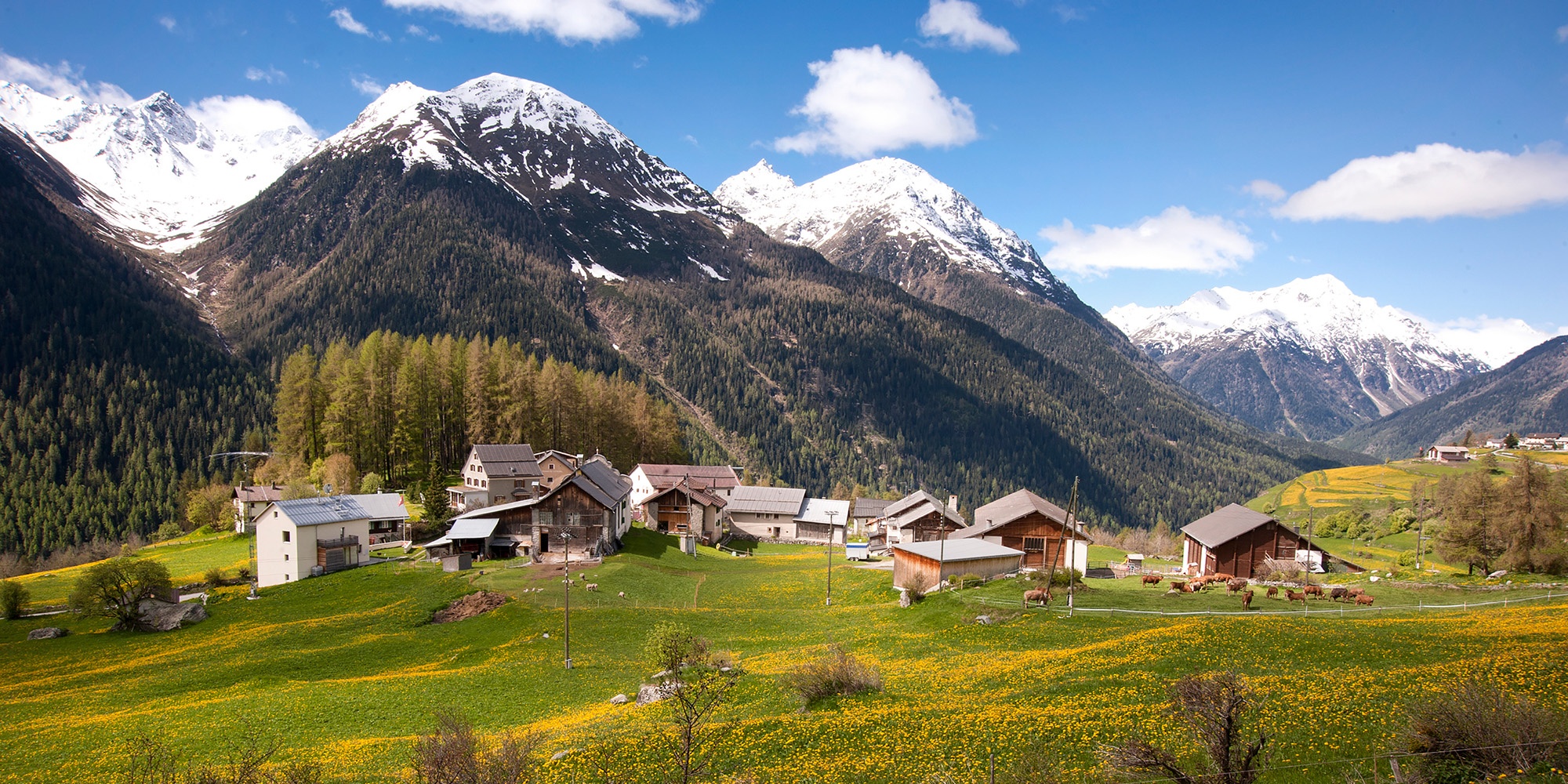Swiss Parks – an Economic Success Story for Local Farms?
Photo: Gabriela Brändle,
Agroscope
Thanks to their unique landscapes, the 15 regional nature parks, the majority of which are located in the (pre-)Alps and in the Jura Arc, feature as tourist attractions. But do the parks also provide economic value-added for local agriculture?
Swiss parks are considered to be model regions for sustainable development and are particularly commited to biodiversity conservation and promotion. In addition to tourism and forestry, the agricultural sector plays a key role in the overall economic performance of Swiss parks.
Study compares the economic performance of farms with and without ‘Swiss Parks’ status
The study analyses whether ‘Swiss Parks’ status has had a positive or negative effect on the economic performance of the farms located within the park. The farms’ economic performance was measured on the basis of three economic indicators: (1) Direct payments per hectare of utilised agricultural area; (2) Total turnover per hectare of utilised agricultural area; and (3) Income per family annual work unit. The two Swiss parks ‘Entlebuch Biosphere Reserve’ (member of the Swiss Parks Network since 2008) and ‘Gantrisch Nature Park’ (member of the Swiss Parks Network since 2012) served as case studies.
To answer the research question, farms within the two Swiss parks were compared with corresponding farms outside of them (at a distance of 10 km from the park boundary). Only farms from neighbouring regions and of similar structure were selected for the study. To estimate the ‘park effect’, the economic performance of the farms within and outside of Swiss parks five years before and five years after park status was achieved were compared with one another.
Farms inside the Entlebuch Biosphere Reserve received higher direct payments
The study showed that ‘park status’ did not have a negative effect on the economic performance of farms located within the park boundaries. Moreover, positive effects were observed for two economic indicators. For farms in the Entlebuch Biosphere Reserve, ‘Swiss Parks’ status had a significant positive effect on the amount of direct payments per hectare (Fig. 1). Specifically, farms within the reserve’s boundaries received direct payments that were on average CHF 249 higher per hectare and year than farms outside its boundaries.

Park status’ led to higher total turnover for farms in Gantrisch Nature Park
The total turnover of farms located within Gantrisch Nature Park was on average CHF 670 higher per hectare and year than that of farms in the neighbouring region (Fig. 2).The total turnover of farms located within Gantrisch Nature Park was on average CHF 670 higher per hectare and year than that of farms in the neighbouring region (Fig. 2).

Conclusions
- The establishment of protected areas to promote and conserve biodiversity need not necessarily have negative effects on the economic performance of the farms located within these areas.
- ‘Swiss Parks’ status was observed to have a significant positive effect on the level of direct payments per hectare of farms within the Entlebuch Biosphere Reserve, as well as a significant positive effect on the total turnover per hectare of farms within Gantrisch Nature Park.
- In terms of trade-offs between the economic and environmental dimensions of sustainability, the findings of the study may be viewed as good news for society, politicians and park management.
Bibliographical reference
Swiss Parks – an Economic Success Story for Local Farms?



